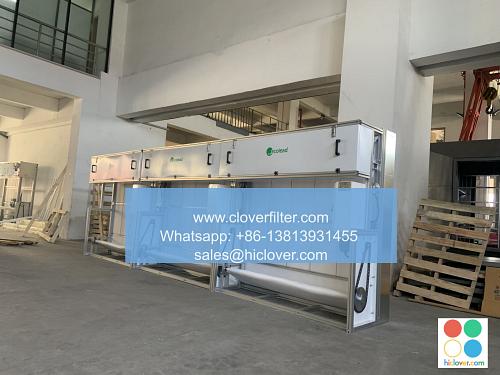The Latest Advances in Air Filter Nanotechnology for Improved Filtration

The pursuit of improved air quality has led to significant advancements in air filter nanotechnology, enabling the creation of more efficient and effective filtration systems. Nanotechnology, which involves the manipulation of materials on a nanoscale, has revolutionized the field of air filtration by providing enhanced nanoparticle filtration, nanofiber-based filtration, and nanomaterial-enhanced filtration capabilities.
Nanoparticle Filtration and Its Applications
Nanoparticle filtration is a key area where nanotechnology has made significant inroads. By incorporating nanoparticles into air filters, manufacturers can achieve higher filtration efficiency and air purification capabilities. These nanoparticles can be designed to target specific types of pollutants, such as particulate matter (PM), volatile organic compounds (VOCs), and nitrogen dioxide (NO2). The use of nanoparticles in air filters has far-reaching applications in industrial air filtration, commercial air purification, and residential air cleaning.
Nanofiber-Based Filtration and Its Benefits
Another area where nanotechnology has made significant advances is in the development of nanofiber-based air filters. These filters utilize electrospun nanofibers to capture airborne pollutants, offering superior filtration performance and air quality improvement. The use of nanofibers in air filters has been shown to enhance capture efficiency and pressure drop reduction, making them ideal for applications in HEPA filtration, ULPA filtration, and gas turbine air filtration.
Nanomaterial-Enhanced Filtration and Its Future Prospects
The integration of nanomaterials into air filters has also been explored as a means of enhancing filtration performance. Researchers have investigated the use of graphene, carbon nanotubes, and metal-organic frameworks (MOFs) to improve air filtration efficiency and selectivity. These nanomaterials offer unique properties, such as high surface area and tunable pore size, which can be leveraged to create advanced air filtration systems. The potential applications of nanomaterial-enhanced filtration are vast, spanning indoor air quality improvement, outdoor air pollution mitigation, and industrial process air purification.
Conclusion and Future Directions
In conclusion, the latest advances in air filter nanotechnology have opened up new avenues for improved filtration and air quality enhancement. By harnessing the power of nanoparticles, nanofibers, and nanomaterials, researchers and manufacturers can create more efficient, effective, and sustainable air filtration systems. As the field continues to evolve, we can expect to see the development of even more innovative nanotechnology-based air filtration solutions, driving progress in air quality management, environmental sustainability, and public health protection. Prompt

